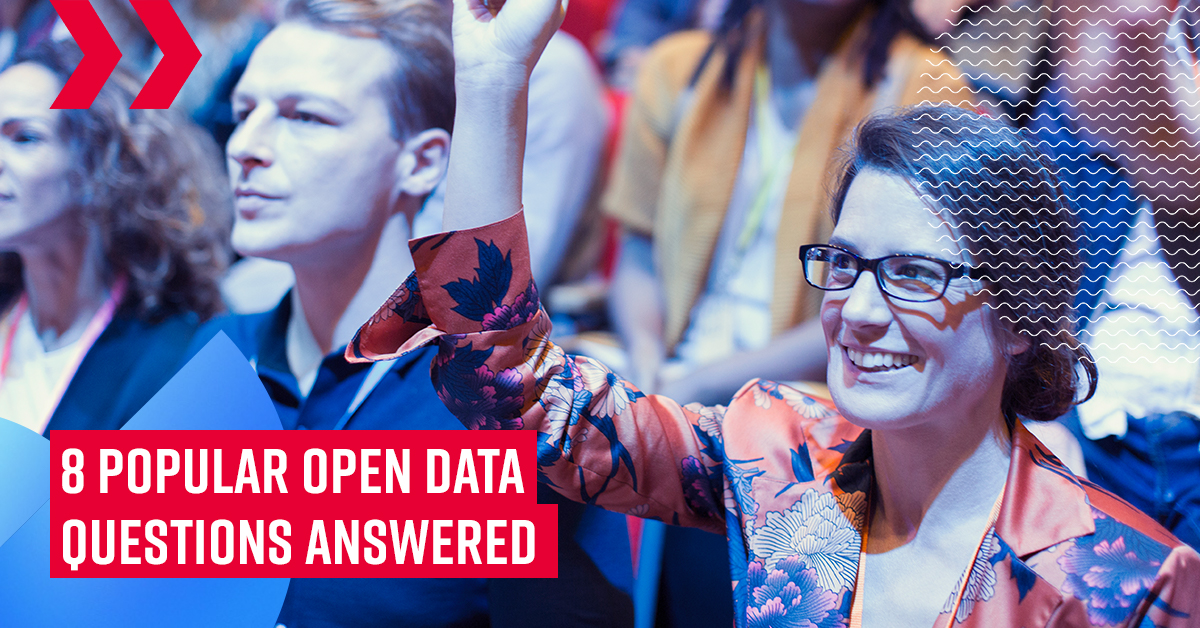8 Answers to the Most Popular Open Data Questions
Open Data was a hot topic at the Equifax global SPARK conference, held in Sydney on 10 September 2019. With consumer, account and transaction data due to become available from February 2020, there's much interest in the implementation of the Consumer Data Right in Australia.
Here are the top eight questions put to a leaders' panel that included Fred Schebesta of Finder, Damir Cuca of Basiq, Kari Mastropasqua of Equifax, James Bligh of Data 61 and Alex Ortner of Allens.

Question 1: What is the Consumer Data Right implementation timeframe?
Answer:
Banking is the first industry in Australia to adopt the Consumer Data Right (CDR). It kicks off from February 2020 as an open banking system. The consumer’s right to data will then extend across sectors like telecommunications and energy, as an open data system.
According to the Australian Treasury implementation schedule, the big four banks will first make consumer, account and transaction data available. This phase one data includes savings, cheque, term deposits, debit and credit card products. In February, phase two data – mortgage products – will be released.
July is phase three when all remaining data will be required to be made available to consumers. This includes overdraft, personal loan, business finance, leases and asset finance product data.
In the same month, all other banks will be required to provide access to consumer, account and transaction data and product data for phase one products. In February 2021, this applies to phase two products. In July 2021, to phase three products.
Question 2: How does the open data rollout in Australia differ to other countries?
Answer:
The European Union, Hong Kong and the UK are among the markets that have created open banking regulations. Elsewhere across the globe, data-sharing frameworks are beginning to flourish even where there is no formal open data regime.
While the sharing of consumer banking and financial data over third-party provider channels is a common objective, each market has its own approach to how this happens.
In the European Union, for example, banks are required to provide secure access, through application programming interfaces (APIs) to a consumer’s account data when requested by a consumer. This legislation is known as the Payment Services Directive 2 (PSD2).
In the UK, open banking was introduced principally as a way to promote competition in the banking industry. By comparison, Australia’s regime is part of the Consumer Data Right, formed as a recommendation from the Productivity Commission’s Inquiry into Data Availability and Use.
Australia is starting with an industry-wide framework to enable consumers to have better control over the use of their data. The CDR Bill sets this framework in place. Under the Bill, the Australian Treasury will designate sections of the economy that will become subject to the CDR regime on an industry basis. Open banking was chosen first, as financial services was identified as being an area where consumers needed more control over their data.
In Australia, open banking data can only be transferred to accredited data recipients, and the transfer, use and security of the data will be governed by rules and standards. This includes specifications for how data holders must respond to consumer requests to transfer data, how data is recorded, and how recipients are permitted to deal with the information. Data standards are being developed by the Data Standards Body, with testing due to occur as the big four banks begin their first open banking implementation.
Question 3: Which sectors will see the introduction of open data?
Answer:
Following on from the launch of open banking, the CDR will be implemented as an open data system in several other sectors. “Energy is expected to be the next sector, followed by superannuation and telecommunications”, predicts James Bligh. Working with Data61, James is leading the creation of the first API standard to be mandated by the Federal Government under the CDR.
Question 4: How will open data affect transaction data businesses?
Answer:
Damir Cuca, the CEO and Founder of Basiq, an aggregation platform for acquiring financial data, is upbeat about the introduction of open data. “We see it as a genuine opportunity that will help businesses mature,” he says.
“It will provide a lot of accessibility and adoption by organisations that haven't traditionally leveraged transaction data as well as those who have been using it for a while.
“However, it’s important to realise that open banking only provides access to data. It’s how you take this data, make sense of it and use it for insights that will make a difference.”
Question 5: What are the interesting trends in transaction data?
Answer:
The dynamic nature of transaction data means that it’s possible to pick up subtle variations in consumer behaviour that couldn’t be seen before, says Kari Mastropasqua, Executive General Manager, Data and Analytics at Equifax.
“Transaction data is enabling the creation of more informed decisions about customers and consumers. We can now map data points to extract value.
“The combination of the traditional, plus transaction data, plus machine learning really does see a big uplift in decision making. What’s interesting about mixing traditional and non-traditional data is that it’s underpinned by a data structure that is more complex than ever before.”
Question 6: How can organisations use open data sets to take their business further?
Answer:
Fred Schebesta, the Co-founder of comparison site, Finder, anticipates the real value of open data will be when consumers start to switch and compare products.
“If you already have a lot of data about your customer’s intent to make a purchase decision, open data will add another layer to this. But in my opinion, the open data revolution will come in the second phase – when consumers start to upload their data to banks, apps, comparison websites and fintechs,” Schebesta says.
“It’s going to mean more switching and more comparing, which is what we want as consumers. It's currently too hard to make decisions with so many products. One energy bill versus another can be extremely complicated, and we want it to be easy. We want our food delivered to us; we want our Uber Eats. In the same way, consumers want their banking switched same day, same time. And it’s here that organisations can uncover new areas of opportunity in developing capabilities and applications designed to make consumers lives easier.”
Question 7: Will there be enough data transferred to bring about value?
Answer:
James Bligh, Lead of the API Standards Working Group, Data61, confirms that it has been a design goal to make a broad range of data sets available.
“CDR is aimed to be a replacement to screen scraping. We’ve been consulting widely on how to make this happen, and to this day we welcome input from data recipients,” he says.
James cautions businesses to be aware that the first phase of implementation will not provide the full set of designated data. “The first phase will probably not be enough for a lot of use cases, but more data will be made available in phases throughout the year.”
Alex Ortner, Senior Associate of Allens Technology, Media and Telecommunications group, adds that organisations are being actively encouraged to share more data than is required.
“The rules distinguish between two concepts of ‘required consumer data’ versus ‘voluntary consumer data’. Required consumer data is anything nominated in the designated information instrument as being required to be shared. Voluntary consumer data is anything else related to the consumer and the relevant product that doesn’t need to be shared but can be anyway,” she explains.
James confirms that extensibility is a part of the API definitions and standards. “There's nothing worse than a compliance activity with no business value,” he says. “It was intended from day one that the API flows will be extended to cater for more complex use-cases.”
Question 8: What's the ideal technology setup for data recipients?
Answer:
Today’s market is all about dynamic data-driven insights and the right ecosystem to drive data to your business, says Kari Mastropasqua, Executive General Manager, Data and Analytics at Equifax.
“The ideal setup is a data, analytics and technology ecosystem where you’re able to capture information, create unique insights and integrate these into a decision-making process. Measurement and continuous learning should be an integral part of this.”
Damir Cuca, CEO, Basiq, adds that technology should be used to find new ways of engaging with customers. He says, “Open banking will enable a change in the dynamics of your relationship with customers. It will move from being a static point-in-time ‘give me your data’ interaction to a dynamic relationship.
“Open banking provides ongoing assets that can evolve with your business. And that puts the challenge back on organisations to place customer needs and wants at the centre of their systems and processes.”
Contact us today to discuss how we can help you with your open banking journey.
Related Posts

Cleansing your customer data of deceased records improves data integrity and helps businesses mitigate legal and financial risks. As the new year approaches, it’s an ideal time to cleanse your database and ensure it contains accurate and up-to-date customer information.

While PEP, sanctions and adverse media screening are vital for customer due diligence, false positives create unnecessary delays and frustration. These inaccurate matches waste time and resources, slowing down onboarding and impacting the customer experience.
So, how can you optimise your screening process and minimise false positives?
